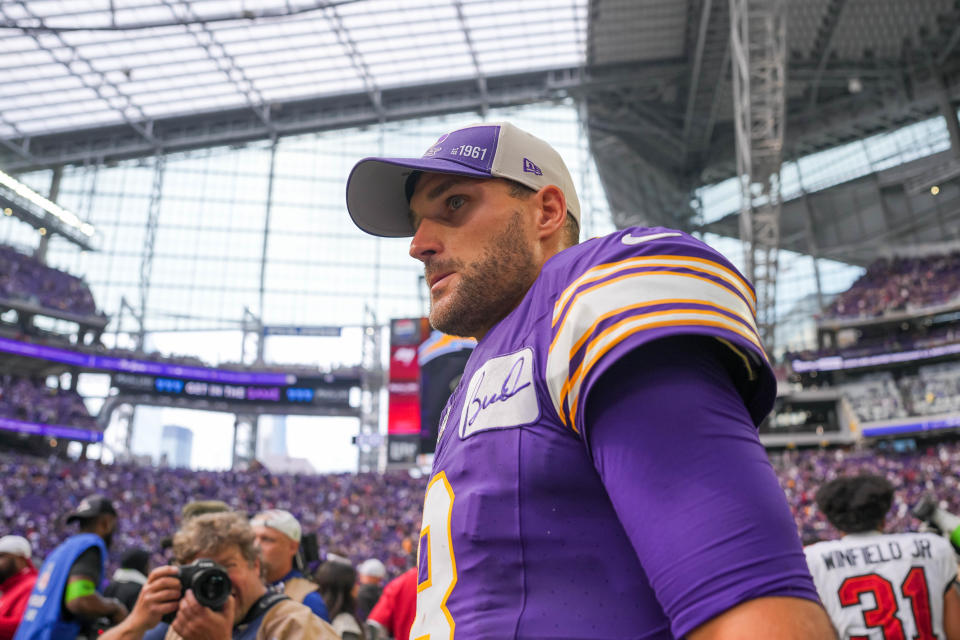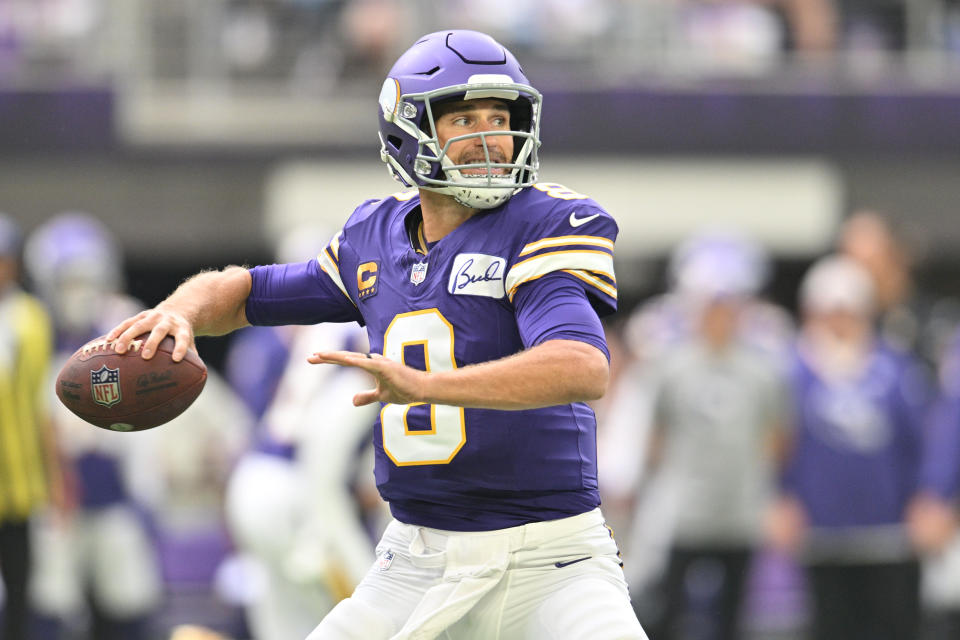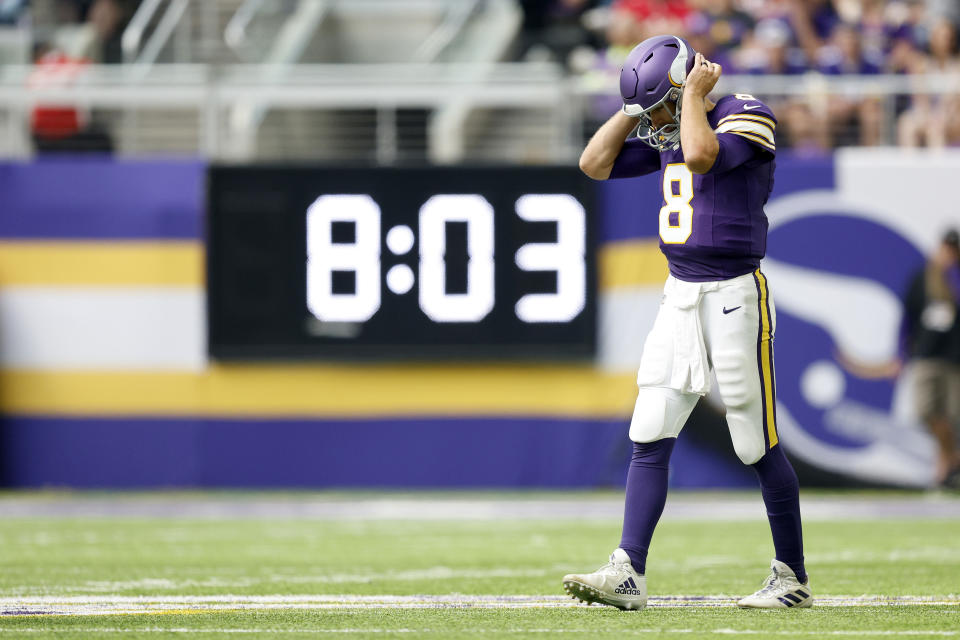Charting and analyzing Kirk Cousins: Week 1

Heading into the season opener, the expectations were high for Minnesota Vikings quarterback Kirk Cousins, and rightfully so.
Cousins was heading into year two of an offense that put up numbers last season, and it’s his first full season with a war chest of weapons, which includes wide receiver Justin Jefferson and tight end T.J. Hockenson.
After one game, the early results of Cousins’ performance might’ve been disappointing. Despite welcoming in a Tampa Bay Buccaneers team that the Vikings were more talented than, the offense set themselves up to fail with turnovers and penalties at critical junctures.
Although the Vikings failed to come away with a win, is it fair to place blame on Cousins? Some blame will always be placed on the quarterback, but how much can vary on the situation.
How can we determine how much blame is placed on Cousins, though? The easiest way is by adding context and understanding the game from a wider lens. And while there are a lot of ways to do that (including film studies and advanced analytics), simple charting can help put the performance into perspective.
Charting Kirk Cousins' performance


Key:
Green line: Complete pass with “plus” accuracy
Purple line: Complete pass with non-plus accuracy
Blue: Dropped pass
Red: Incomplete pass w/ clean pocket
Orange: Incomplete pass w/ pressure
Note: Charting does not include yards after the catch by the receiver. The yardage is determined by where the ball was thrown and not where the play finished.
What's the point of charting?

Statistics can be misleading, especially basic ones like completions and incompletions.
Charting a performance like this adds context to a quarterback’s performance because each throw is given a situation. This can be particularly useful for a player like Cousins, who is a polarizing discussion among NFL circles.
The charting can also help show what the offense’s plan was. Lines deeper down the field signify an offense looking to push the ball vertically, while lines closer to the line of scrimmage (the bottom line) show an offense focused on beating a team in other areas.
To be clear, both game plans are viable and can vary by week. Just because a team has lines closer to the line of scrimmage doesn’t mean the offense played poorly, and green lines deeper down the field also don’t immediately signify an offense that “cooked.”
What positives can we take from Cousins' performance?

Let’s get the obvious out of the way: Cousins was incredibly accurate in the loss.
While a completion percentage can be deceiving, it isn’t this time. That 75 percent completion percentage was for real, as Cousins displayed some incredible pinpoint accuracy throughout the game.
Take this throw from Cousins to Jefferson as the perfect example of it. Cousins does a great job of recognizing pressure, knowing where the opening is, and attacking it with anticipation. It’s not a superhero throw — you’d expect most quarterbacks to make it, frankly — but it is good play between the ears, and that matters in the NFL.
The Vikings also found success when pushing the Buccaneers deep, as Cousins connected on three passes over 20 yards. The longest of those throws was the touchdown pass Jordan Addison in the first half.
I don’t think there were a lot of throws that Cousins would want back from this game. While the Vikings didn’t push the ball down the field all the time, they found ways to create explosive plays and push the needle. For a Week 1 performance, that’s an incredibly encouraging sign.
What went wrong?

Although not charted, Cousins struggled under pressure. When the Buccaneers were able to get in his face, Cousins struggled to create the plays you’d expect a quarterback to make.
That’s not necessarily a surprise — most quarterbacks struggle when defenses can throw them off their base — but Cousins was particularly disappointing in these situations. While the offensive line deserves some blame, Cousins was responsible for some of it.
It also didn’t feel like Cousins was particularly decisive in his reads. Kevin O’Connell kept a ton of reads simplified, and his first reads were open often, but sometimes, when Cousins needed to rotate to another part of the progression, he struggled.
Cousins is way too slow to rotate to the backside on this play, which forces him to almost loft it up to Osborn. It’s clear fairly quickly that Hockenson (running the corner) isn’t open, and Cousins should already be moving to the backside concept. Instead, he sits on the Hockenson route and delays everything.
All pressures aren’t created equal. This play might get credited as a pressure allowed from the offensive line, but the muddy pocket happens because Cousins is too slow rotating over.
The Real Forno Show
[lawrence-related id=82987,82977,82993,82963,82928,82969]

